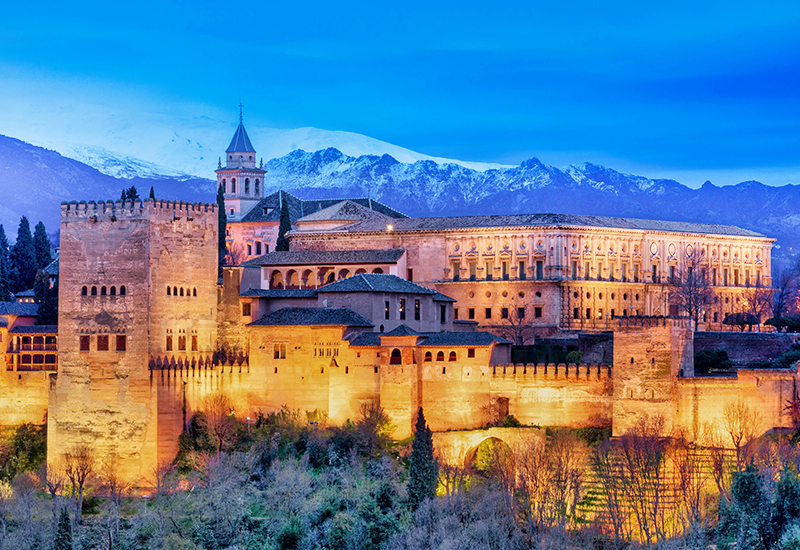Spain is one of the most attractive and popular European countries. Along with Italy, it exhibits a great mix of architecture and art from all historical periods of Europe. The Alhambra is a palace, fortress, and historic city in Granada, Spain, comprising a complex of buildings in the western part of Granada, facing the neighborhoods of Albaicin and Alcazaba.
The name “Al Hamra” means “red” in Arabic, which means the red color of its outer walls. More than 800 years old, this remarkable building is the only surviving building from the Golden Age of Islam in Spain, belonging to the Nasrid dynasty, the last Muslim rulers in Western Europe. This complex includes different parts, such as the main palace, castle, mosque, gardens, and baths. In this article, we will explore the history, architecture, and artistic features of the Alhambra.
Table of Contents
ToggleHistory of the Alhambra the Granada
The construction of the Alhambra began during the Reconquista when Christian kings began to reclaim territories from the Muslims. The circular structure, built in the 16th century, is the palace of Charles V. To its left is the Torre de Comares, which is part of the Serallo de Embajadores. Between these structures is the Court of Lions with the famous fountain and Mexuar Hall. Behind all these is Al-Qazaba, Al-Hamra Castle.
Alhambra Palace’s history dates back to the 13th century when its construction began. However, the Alhambra is essentially a collection of palaces, each built by different rulers.
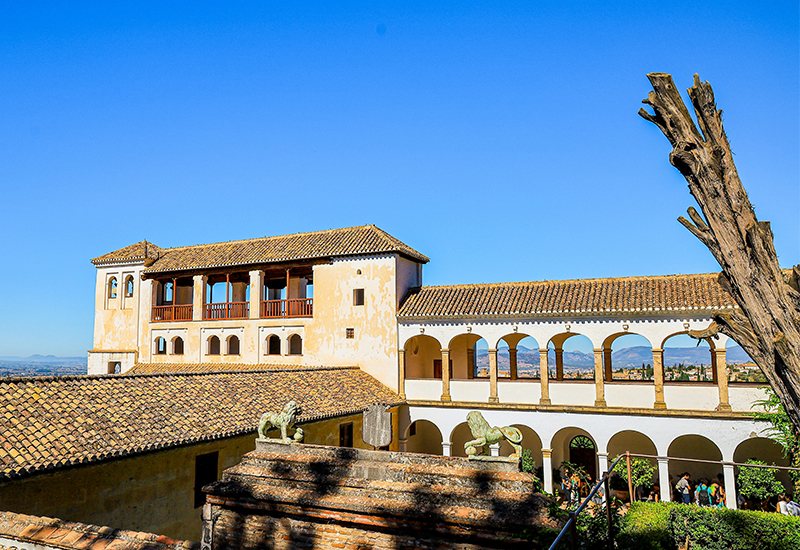
The overarching idea behind these structures was to create a paradise on earth. The desert-dwelling Muslims, for whom water was more precious than any gem, decorated the palace gardens with dreamy springs, fountains, and reflective pools fed by streams and rivulets.
The sound of water murmuring throughout the gardens and courtyards adds to the enchanting atmosphere, making the discovery of small springs a delightful experience.
The Christians conquered Granada in 1492, and a few years later, when King Ferdinand and Queen Isabella, the Catholic Monarchs, passed away, Granada was chosen as their burial place.
Overall, the Alhambra’s exterior is fairly plain, while the interior features a series of decorations inspired by the palace architecture of the Berbers of Morocco. Glazed tiles with complex designs, elaborate plasterwork with geometric and botanical designs, and Quranic inscriptions in Kufi, Naskh, and Rihani script are among these works.
When was the Alhambra Built?
The construction of Alhambra began in 889 AD as a small fortress. Over the centuries, this building became a magnificent palace complex that presents various architectural styles influenced by Islamic and Christian cultures.
Today, this place is a symbol of Spain’s rich cultural heritage and is admired worldwide for its stunning beauty and historical significance.
Why is Alhambra Famous?
Alhambra is known for its stunning beauty and intricate design that fascinates visitors from all over the world. Its exquisite Islamic art, including detailed mosaics, ornate plasterwork, and beautiful calligraphy, showcases the craftsmanship of its builders.
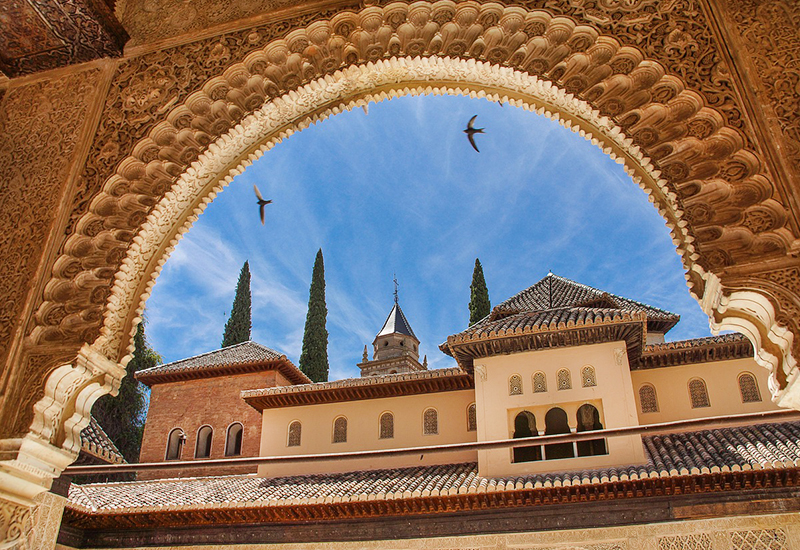
Lush gardens, with flowing fountains and tranquil ponds, offer a tranquil atmosphere that contrasts with the grandeur of the palace.
In addition, Alhambra’s strategic location on a hill offers stunning views of the city of Granada and the surrounding mountains, adding to its appeal. The palace’s rich history as a symbol of cultural exchange between Muslims and Christians also contributes to its fame.
Alhambra Architecture
One of the main reasons to visit Alhambra is its breathtaking architecture. Alhambra is not just a palace, but a collection of palaces and grounds that combine Renaissance and medieval styles.
These structures are irregularly arranged and surrounded by walls, separating them from the rest of Granada. Despite being located in Western Europe, the Alhambra shows Islamic art with beautiful geometric patterns, arched columns, embossed patterned tiles, Arabic inscriptions, reflecting pools, and vibrant fountains.
This fusion of styles reflects Spain’s multicultural and religious history, making the Alhambra fascinating, mysterious, and architecturally iconic.
Alhambra is bordered to the north by the valley created by the Darro River, to the south by the Sabika Valley, and to the east by Cuesta del Rey Chico Street. It also offers a view of the Sierra Nevada Mountains. This walled city includes public baths, cemeteries, shrines, and gardens, with a waterway running through it, adding to the lush greenery and scenic beauty.
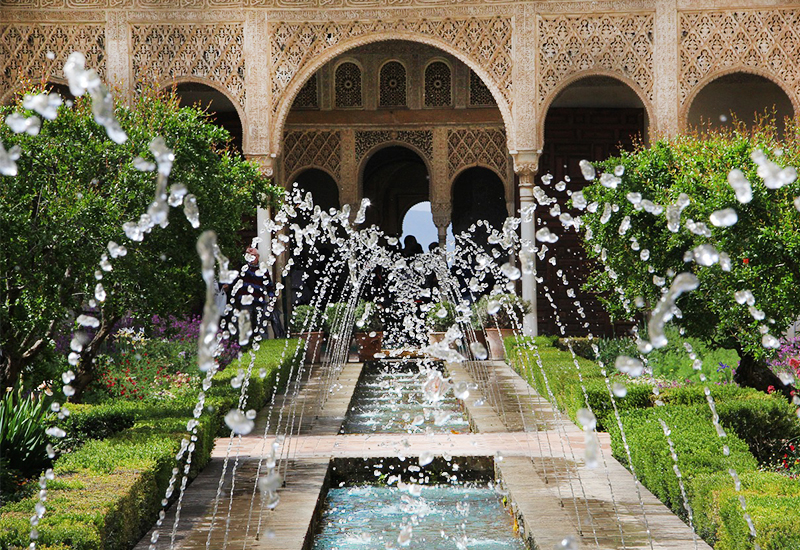
The Alhambra’s extraordinary architecture is interwoven with stunningly decorated frescoes, columns, arches, and walls, displaying a mix of styles that harmonize with Spain’s multicultural and religious history.
These elements make Alhambra not only attractive and mysterious but also symbolic in terms of architecture. In addition, Alhambra has many narrow passages and secret doors that allow the Sultan to move discreetly and out of public view if necessary.
Parts of Alhambra Palace
Alhambra Palace has different parts, such as Alcazaba Castle, Nasri Palaces, Palace of Lions, and Mexuar and Mocárabes Halls, each of which will be briefly outlined below.
Alcazaba Castle
The Alcazaba is the oldest part of the Alhambra, known for its historical importance and defensive structures. Built by Mohammed I, it has ramparts and additional defensive towers such as the Broken Tower (Torre Quebrada), the Guard Tower (Torre del Homenaje), and the Watchtower (Torre de la Vela).
During the time of Muhammad II, it was used as a royal residence until the completion of the main Alhambra complex.
Later, it served as a military fortress and defense fortress, and during the French occupation, it served as a state prison. Abandoned for many years, the Alcazaba has undergone significant restoration efforts since the early 20th century to preserve its historical integrity.
Nasrid Palaces
Built in the 14th century by Yusuf I and his son Muhammad V, Nasrid palaces were private residences but were also used for ceremonies, official affairs, and leisure.

These palaces display a great use of sunlight and space in their rooms and showcase stunning decorations and architectural details. They are designed not only for practical use but also to create a sense of luxury and elegance that reflects the artistic and cultural achievements of the Nasrid dynasty in Granada.
Mexuar Hall
Mexuar Hall, which is used for official meetings and administrative affairs, derives its name from the Arabic word mashwar, which means consultation. Due to religious beliefs, the display of living creatures in its decorations is avoided.
Instead, beautiful lines and geometric patterns decorate the hall, most notably the Arabic phrase “God alone is victorious” that can be seen throughout the room. Intricate plasterwork depicting plant motifs is another notable feature. The geometric shapes presented in the colorful mosaics symbolize the concept of an infinite universe.
Over the years, Mexuar has undergone significant changes from its original form, reflecting its evolving use and cultural influences.
The Palace of the Lions
The Palace of the Lions, alongside the Court of the Myrtles and the Comares Bath, features the enchanting Court of the Lions. This rectangular courtyard is 35 meters long and 20 meters wide and is decorated with 124 marble statues around it.
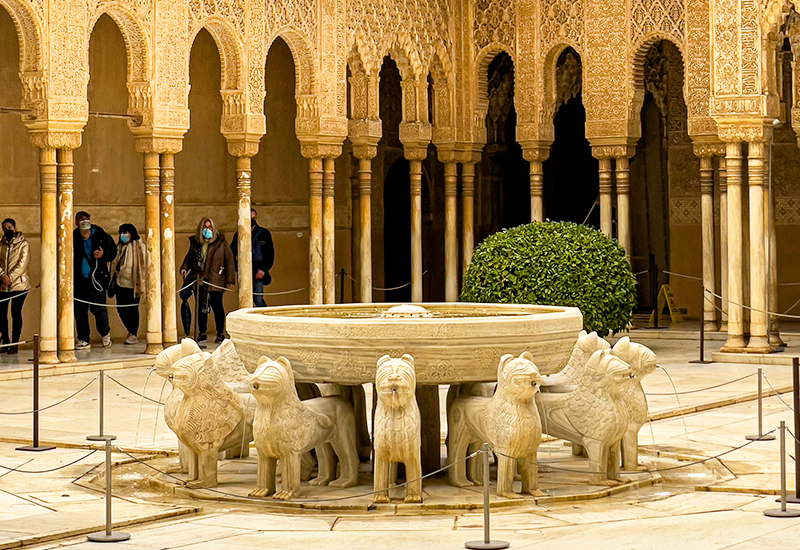
Constructed during the latter part of the Nasrid Sultan Muhammad V’s reign, from 1362 to 1391 AD, this courtyard leads to three beautiful chambers: the Hall of the Two Sisters, the Hall of the Benches, and the Hall of the Kings.
This courtyard, which was built at the end of the Nasrid reign of Muhammad V, from 1362 to 1391 AD, leads to three beautiful rooms: Hall of Two Sisters, Hall of Benches, and Hall of Kings.
The court and palace of lions served as a private space for the sultan and his close associates. Each of the four zones within it had its own purpose and size, which was adjusted seasonally and according to personal preferences.
These halls were not furnished with permanent decorations and allowed the sultan to meet with his advisors, eat, and rest when needed. The harem was located on the upper floor, hidden behind mesh walls, where the women discreetly went about their daily tasks and observed the activities of the courtyard below.
The Hall of Mocárabes
The Mocárabes Hall, which is adjacent to the Lions’ Court, was mainly used for receiving and entertaining visitors and was known as the simplest hall in the Lions’ Palace. It is located near the old entrance of the palace and takes its name from the intricate stalactite arches known as “Mocárabes” inside.
Mocárabe is a type of decorative honeycomb arches used under domes or semi-domes above courtyards, entrances, and pediments.
Interestingly, visitors who access this hall through the Court of Lions have to pass under three such mocarabe vaults and add to the unique architectural experience of this space.
When was the Alhambra Destroyed?
Alhambra has never been completely destroyed. However, it has faced periods of neglect and minor damage over the centuries.
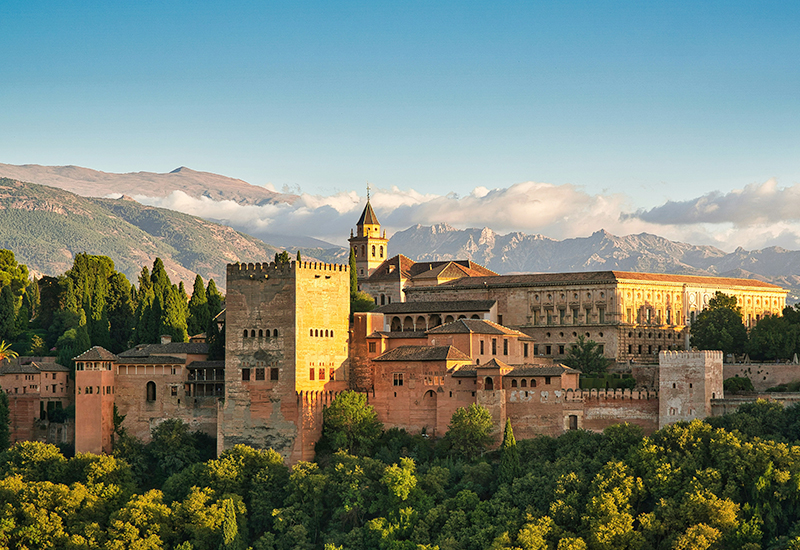
After the Christian reconquest of Granada in 1492, some parts of the Alhambra were altered or destroyed to make way for new structures. In addition, an earthquake in 1821 caused considerable damage.
Despite these challenges, much of Alhambra has been preserved and restored, allowing it to remain a significant historical and architectural site.
Alhambra Tickets
Tickets to visit the Alhambra can be purchased in advance online or at ticket offices in Granada, but due to high demand, it is recommended to book in advance. There are several types of tickets, including general admission to the Alhambra complex, which includes the Nasrid Palaces, the Generalife Gardens, and the Alcazaba.
There are also tickets for night visits and combination tickets that include access to other attractions in Granada.
It is important to check their website for ticket availability and prices and to ensure your preferred date and time to visit this iconic site.
Final Word
Today, Alhambra is one of the main tourist attractions of Spain, which displays a significant part of the history and Islamic architecture of this country, along with its 16th-century structures and enchanting gardens. Surrounded by mountains and forests, the palace stands proudly in the oldest part of the city, its red walls a striking feature. Originally built as a small fortress in 889, Alhambra has become one of the most famous Islamic buildings in the world.
Just one look at Alhambra Palace photos is enough to be fascinated by its architecture and grandeur. If you visit Granada on your Spain tour, Alhambra is a must-see attraction.
If you want to experience a unique and exciting trip, make sure to visit Spain cities and their attractions.

